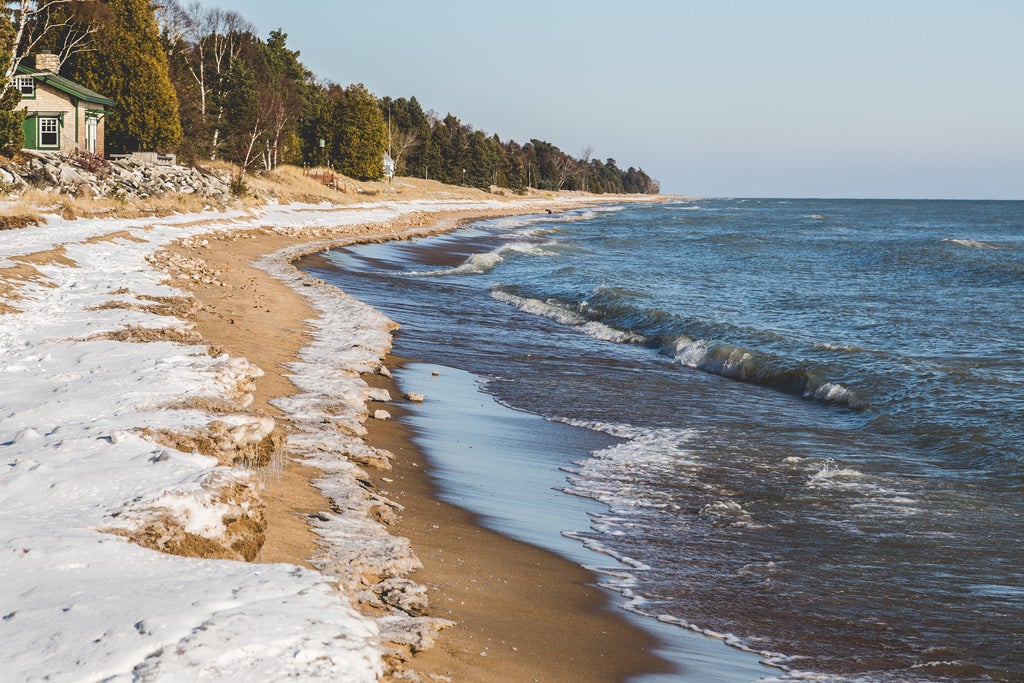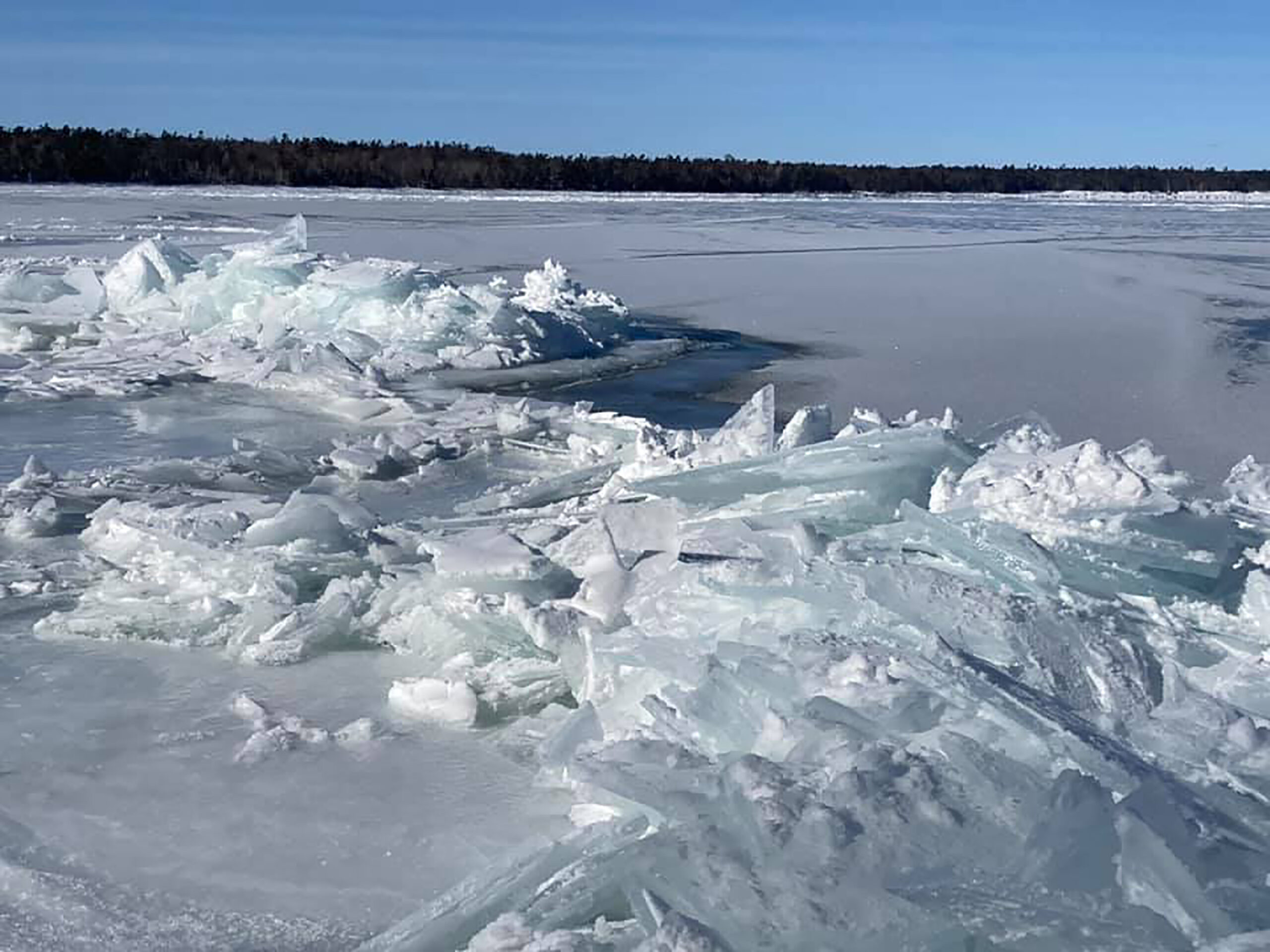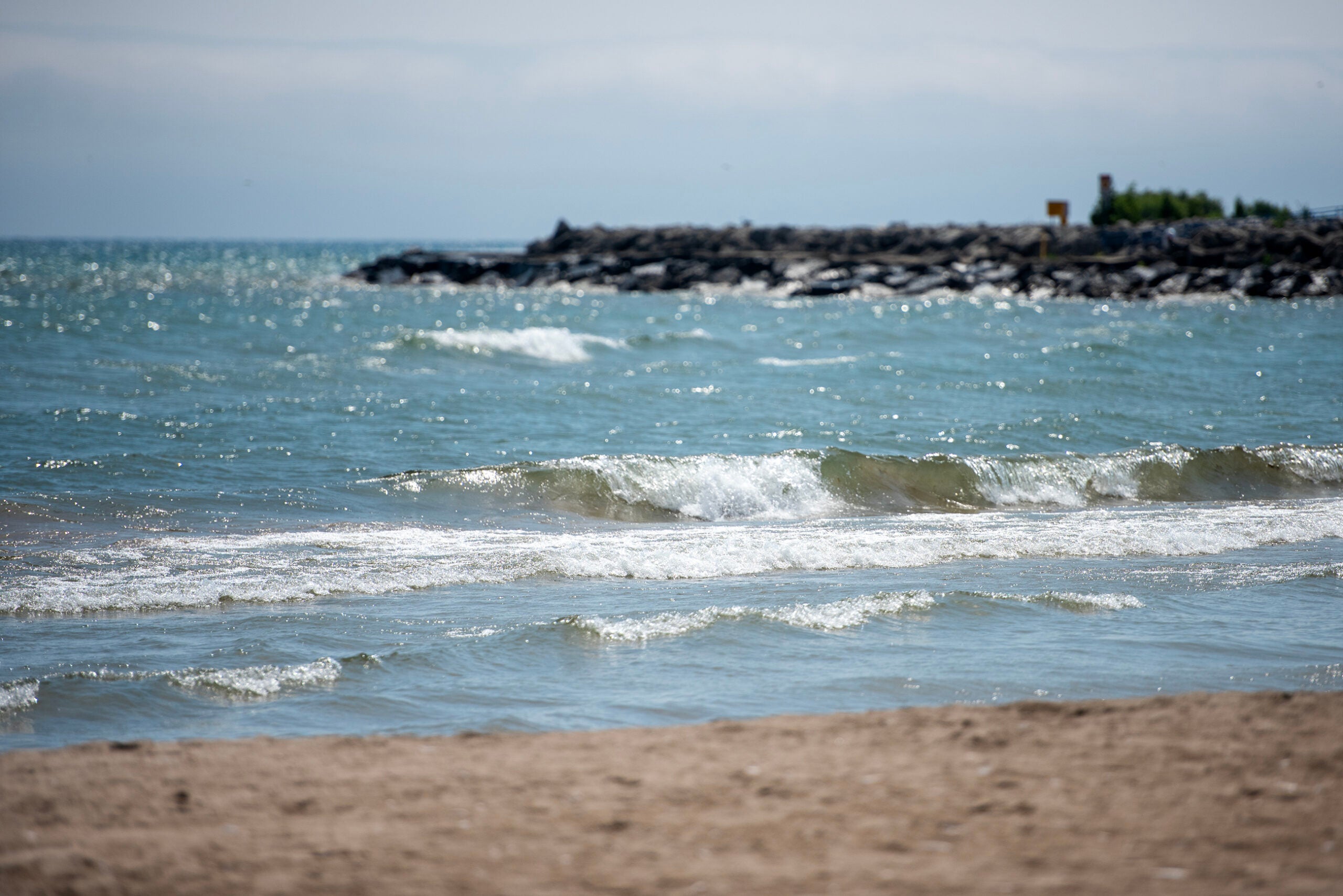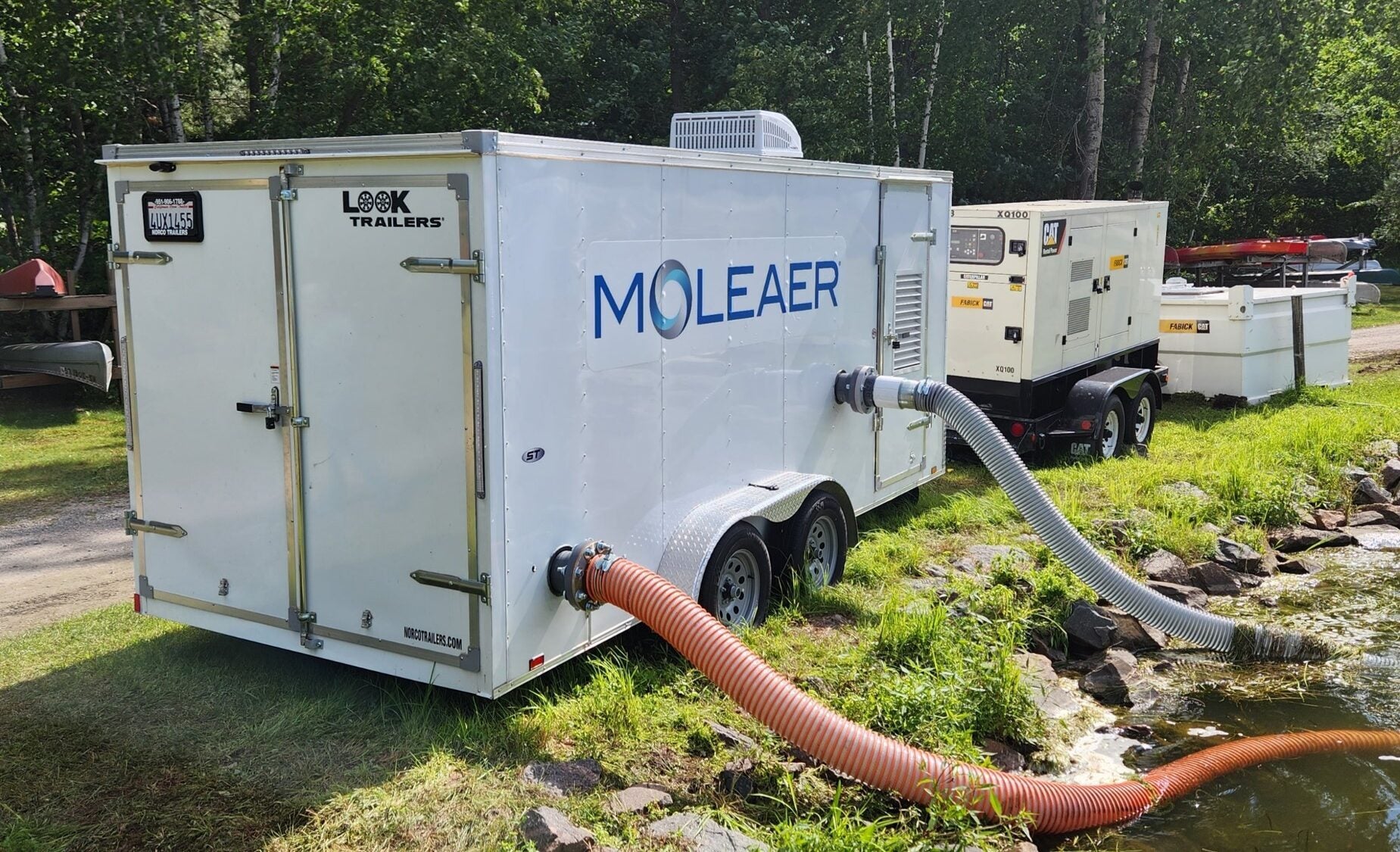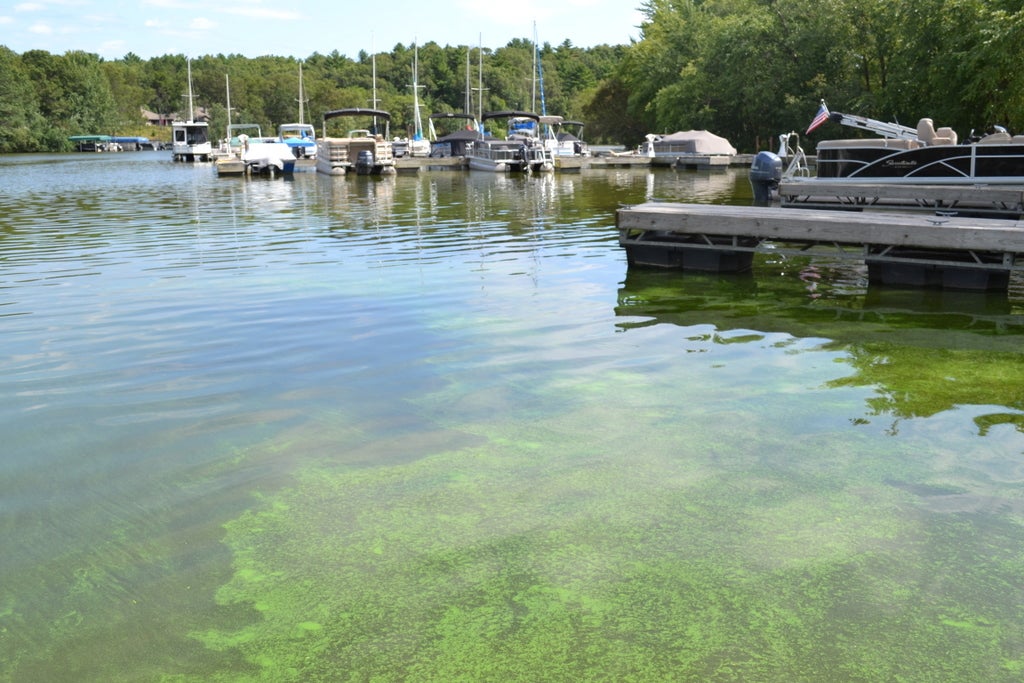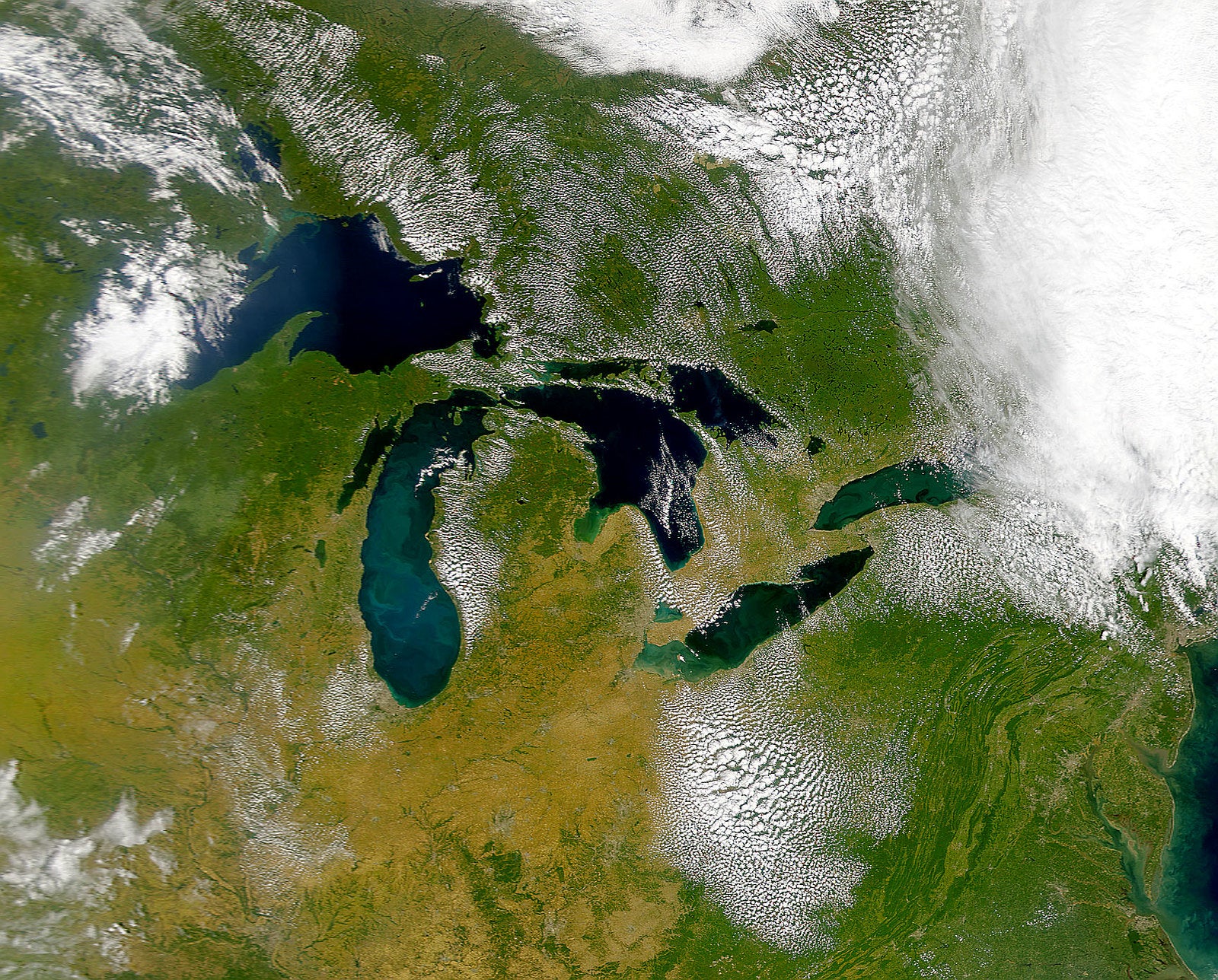Ice cover on the Great Lakes has hit a low never before seen in mid-February as the region has witnessed warmer than normal temperatures during a time of year when ice cover nears its peak.
On Tuesday, researchers with the National Oceanic and Atmospheric Administration, or NOAA, reported that average ice cover on the Great Lakes was at 2.7 percent. The data from NOAA’s Great Lakes Environmental Research Lab shows that’s the lowest level for Feb. 11 since records began in 1973.
Andrea Vander Woude is the lab’s integrated physical and ecological modeling and forecasting branch chief. While ice cover on the lakes inched up to 4 percent on Wednesday, she said levels remained at historic lows. In 2023, the lakes also saw a low-ice year, but she called this year’s lack of ice “unprecedented.”
News with a little more humanity
WPR’s “Wisconsin Today” newsletter keeps you connected to the state you love without feeling overwhelmed. No paywall. No agenda. No corporate filter.
“The main driver is climate, a changing climate, and warming temperatures around the globe,” Vander Woude said.
On Wednesday, Lake Superior was at 2.7 percent ice cover; Lake Michigan at 2.7 percent; Lake Huron at 10 percent; Lake Erie at 0 percent; and Lake Ontario at 0.8 percent, according to NOAA.
Vander Woude said researchers typically look at ice cover during the middle of February to determine what may happen for the rest of the season, which ends in March.
While more of the lakes could freeze, she said it’s possible they may have already reached their peak. Only about 16 percent of the lakes froze during a cold snap last month. In 2002, the lakes saw their lowest ice cover on record when it peaked at 11.8 percent.
On average, the Great Lakes have seen a maximum ice cover of 53 percent since 1973. However, the amount of ice has dropped about 5 percent each decade or 25 percent in the last 50 years.
Researchers have previously found climate change is causing lakes around the world to heat up faster than the oceans. A 2015 study by more than 60 scientists found ice-covered lakes like Lake Superior are warming more rapidly than those without ice cover.
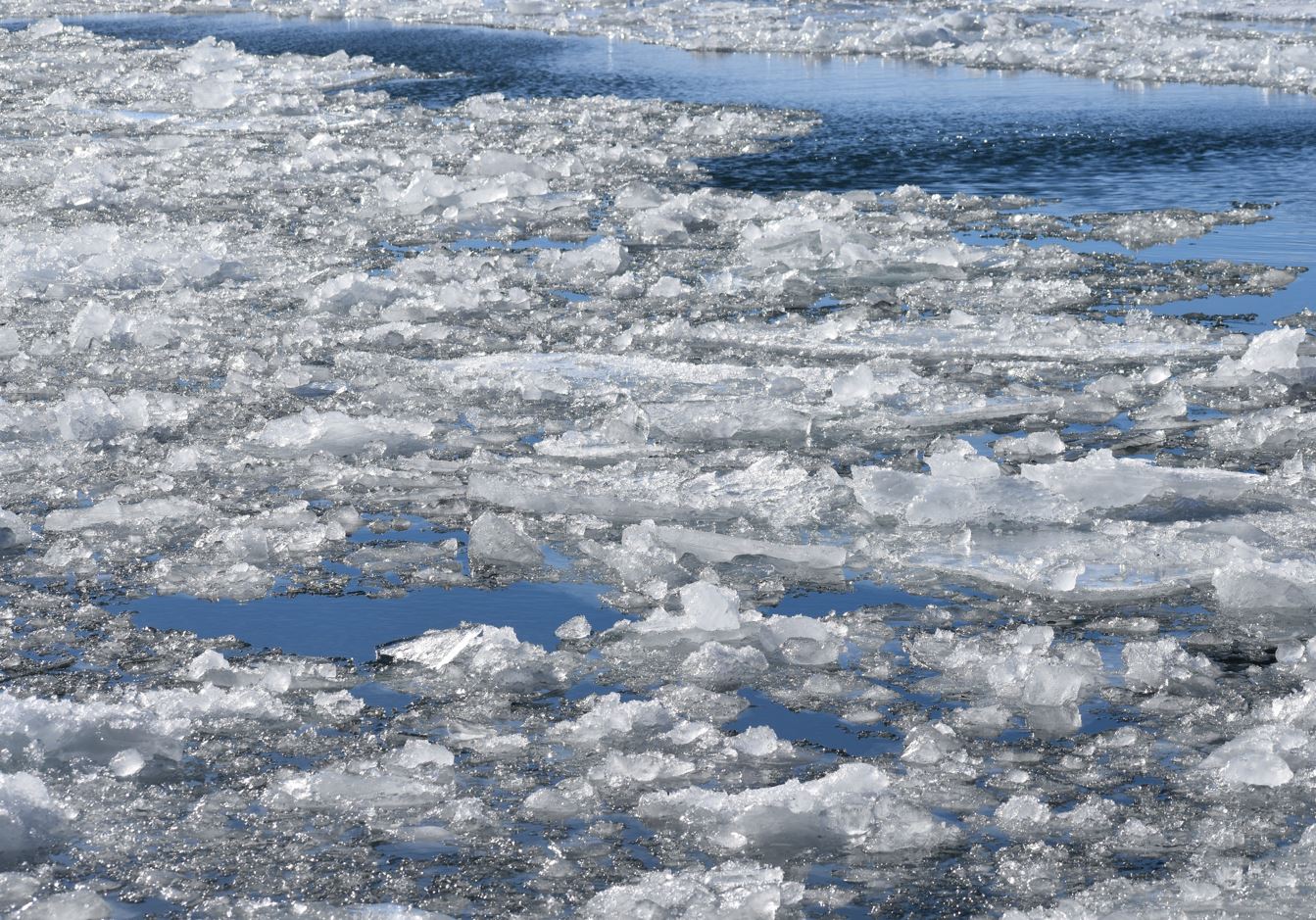
Less ice has far-reaching effects
The lack of ice can have far-reaching impacts on ecosystems within the Great Lakes, water levels, shoreline erosion, lake effect snow and economic effects on winter activities.
Hilary Dugan, associate professor in the Center for Limnology at the University of Wisconsin-Madison, said ice-free conditions can lead to warmer waters that can affect mixing of nutrients with lakes and algae growth.
“What’s unclear as we have these winters where there’s no ice, are we going to see winter starting to look like spring where we start seeing more algae growth and different dynamics happening that we used to see a lot later in the year,” Dugan said.
Russell Cuhel and Carmen Aguilar are senior scientists with the School of Freshwater Sciences at UW-Milwaukee. The two were out sampling in the Milwaukee harbor on Tuesday. They’re following phytoplankton, or algae, and nutrients that have been stirred up by dredging that’s part of a larger project to clean up contaminated sediments in the Milwaukee River estuary.
Cuhel said the lack of ice favors some algae with the mixing of open water and more light that increases their ability to grow. The two observed algae in samples in a channel flowing into Lake Michigan. Cuhel said they’re “growing like mad” in the harbor.
“This is like mad compared to what it would be this month on an ice-covered year,” Cuhel said. “They are growing much better than we would expect at this time of the year because they get a lot of light and turbulence that they normally would not get.”
Cuhel said the nutrients stirred up by dredging are helping stimulate their growth. Aguilar said the type of algae, known as diatoms, are a group that like cold conditions.
She added that open water can also lead to more evaporation on the Great Lakes.
“Now, you don’t have the ice to be kind of helping that component of the lakes, so then the lake levels might change for 2024,” Aguilar said.
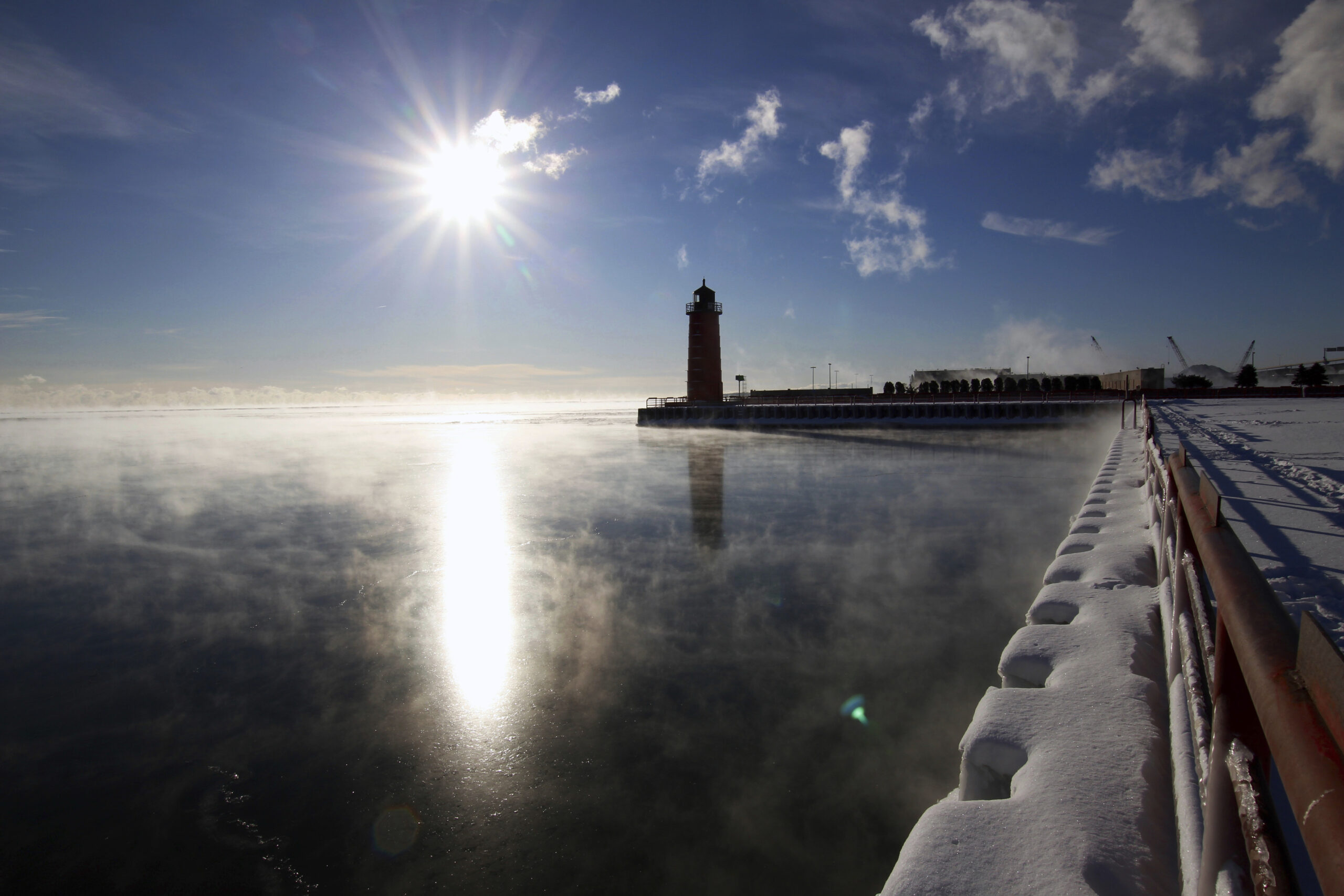
Less ice could affect lake levels, shipping and more
Ice-free winters are often tied to lower lake levels because they’re losing more water than if they were frozen, said Dugan. That could affect the amount of cargo transported by the Great Lakes shipping industry. Less ice can also lead to shoreline erosion.
“If you have no ice protecting the shoreline, big winter storms just aid in eroding the shoreline during a time of year that’s normally protected,” Dugan said.
Reduced ice can also pose both negative and positive effects for fish and anglers, according to Cuhel.
He said salmonids like trout and whitefish love cold water, drawing close to the shore in fall and winter for food. Anglers can reel in their catch from piers or breakwalls, but ice fishing is almost nonexistent or unsafe. The loss of ice can also disrupt spawning along the shoreline. That can stress species like whitefish.
Less ice can also lead to warmer water temperatures in the summer. In 2007, researchers at the University of Minnesota in Duluth found Lake Superior’s summer water temperature had increased by about 5 degrees Fahrenheit from 1979 to 2006. As the globe sees hotter summers, Vander Woude said the lakes retain that warmth, making it harder for them to cool down.
“I don’t know what it’ll look like for the next few years. It really depends upon what we can model after the end of the season in March,” she said. “But having two low-ice years stacked up in a row, we’ll have to look at whether or not that means a third low-ice year upcoming for next year.”
Wisconsin Public Radio, © Copyright 2025, Board of Regents of the University of Wisconsin System and Wisconsin Educational Communications Board.

